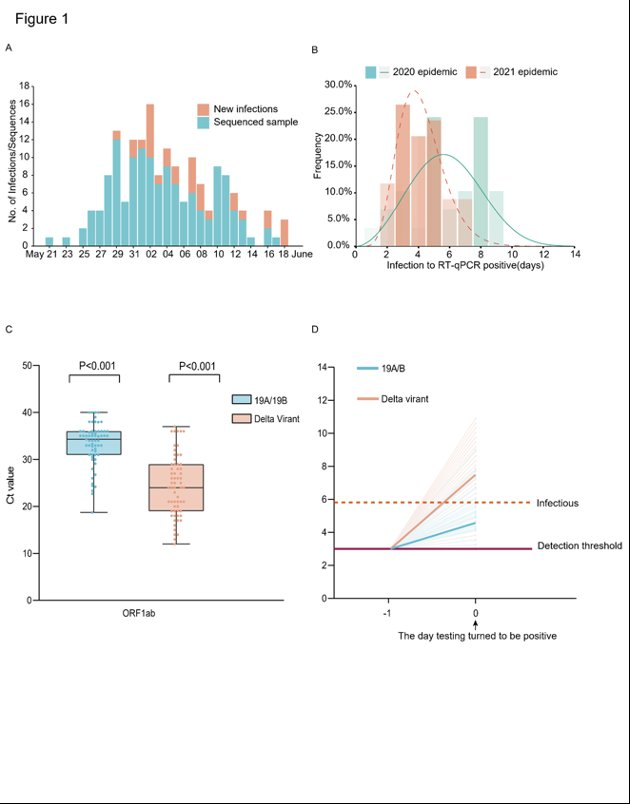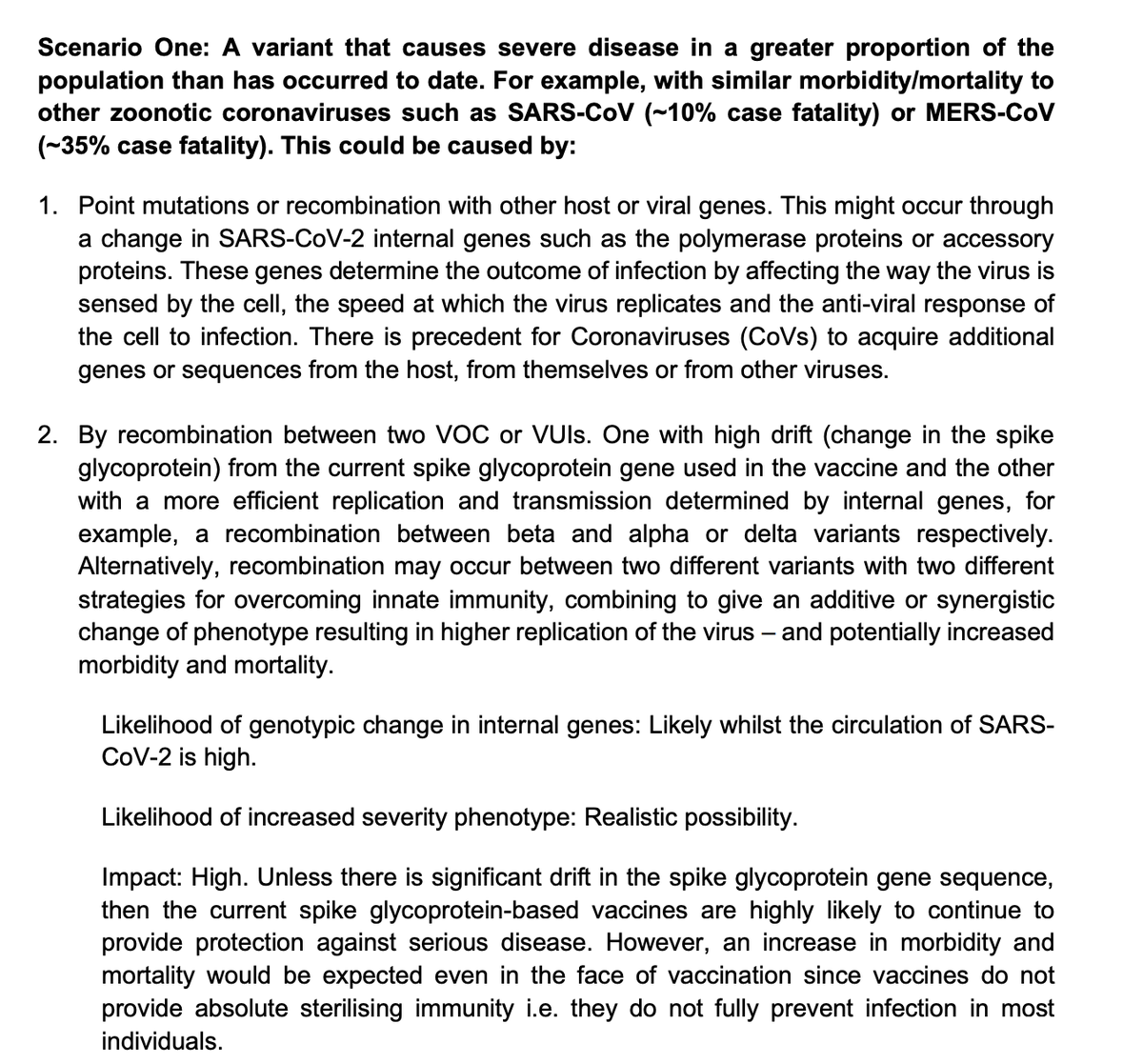🚀📈Delta viral load is not x1000, explained
In my opinion this study is not being interpreted wright
virological.org/t/viral-infect…
@Guillermo4ldama @EricTopol @gorka_orive @PabloFuente
In my opinion this study is not being interpreted wright
virological.org/t/viral-infect…
@Guillermo4ldama @EricTopol @gorka_orive @PabloFuente
The study claims:
👉The investigation on daily sequential PCR testing of the quarantined subjects indicated the viral load of the first positive test of Delta infections was ~1000 times higher than that of the 19A/19B strains infections back in the initial epidemic wave of 2020
👉The investigation on daily sequential PCR testing of the quarantined subjects indicated the viral load of the first positive test of Delta infections was ~1000 times higher than that of the 19A/19B strains infections back in the initial epidemic wave of 2020
It does not say that viral load is x1000, just says that when first detected it is x1000
They do PCR every 24h. In the 24h gap between a negative test and a positive one, delta grows much faster, resulting in higher virus count at that particular time
They do PCR every 24h. In the 24h gap between a negative test and a positive one, delta grows much faster, resulting in higher virus count at that particular time

Unfortunately the report of this study lacks of clear explanation of this graphic, would be great to have the raw data to define this precisely
One important conclusion is that the delay (less than 24h) between AG detection versus PCR is much less now with delta 

Also this justify to ask for PCR 24h instead of 72h, and reduces the time a negative result gives you a low % of turning into +
The study gives valuable info:
Shorter pre-detectable/incubation period
Much faster grow in early stages
Very contagious in pre-synthomatic
Shorter pre-detectable/incubation period
Much faster grow in early stages
Very contagious in pre-synthomatic

But is a shame the didn't carry on with 24h test once every case is first detected, writing down the CT value for every test
This way we could build an accurate viral load curve, which is of vital importance
This way we could build an accurate viral load curve, which is of vital importance

"There's a 40% drop in vaccinated viral load, which is not much. Still plenty of virus to transmit to others, and Delta makes up for it by reaching 2-4x higher levels than previous variants"@michaelzlin
researchsquare.com/article/rs-637…
researchsquare.com/article/rs-637…
https://twitter.com/michaelzlin/status/1411427467433103362?s=20
This graphic is for the original type. With #deltavariant the rise is even more vertical,this explains x1000 in early stages 

Time lapse between detection and infection is being reduced a lot, in both Rapid antigen LFT and PCR, if the study is wright
Schematic: Time lapse between detection and infection for AG, original vs delta
Schematic: Time lapse between detection and infection for AG, original vs delta

Even more reduction for PCR
Schematic: Time lapse between detection and infection for PCR, original vs delta
Schematic: Time lapse between detection and infection for PCR, original vs delta

From assets.publishing.service.gov.uk/government/upl…
Difference between original (EU1) and delta is around 2 ct at peak (1-2 day after synthoms) meaning x4 viral load, and after 1 ct ~x2
In my view, x1000 is only at the moment virus is detected doing PCR every 24h,
Difference between original (EU1) and delta is around 2 ct at peak (1-2 day after synthoms) meaning x4 viral load, and after 1 ct ~x2
In my view, x1000 is only at the moment virus is detected doing PCR every 24h,

variants in uk form covariants.org 

• • •
Missing some Tweet in this thread? You can try to
force a refresh












